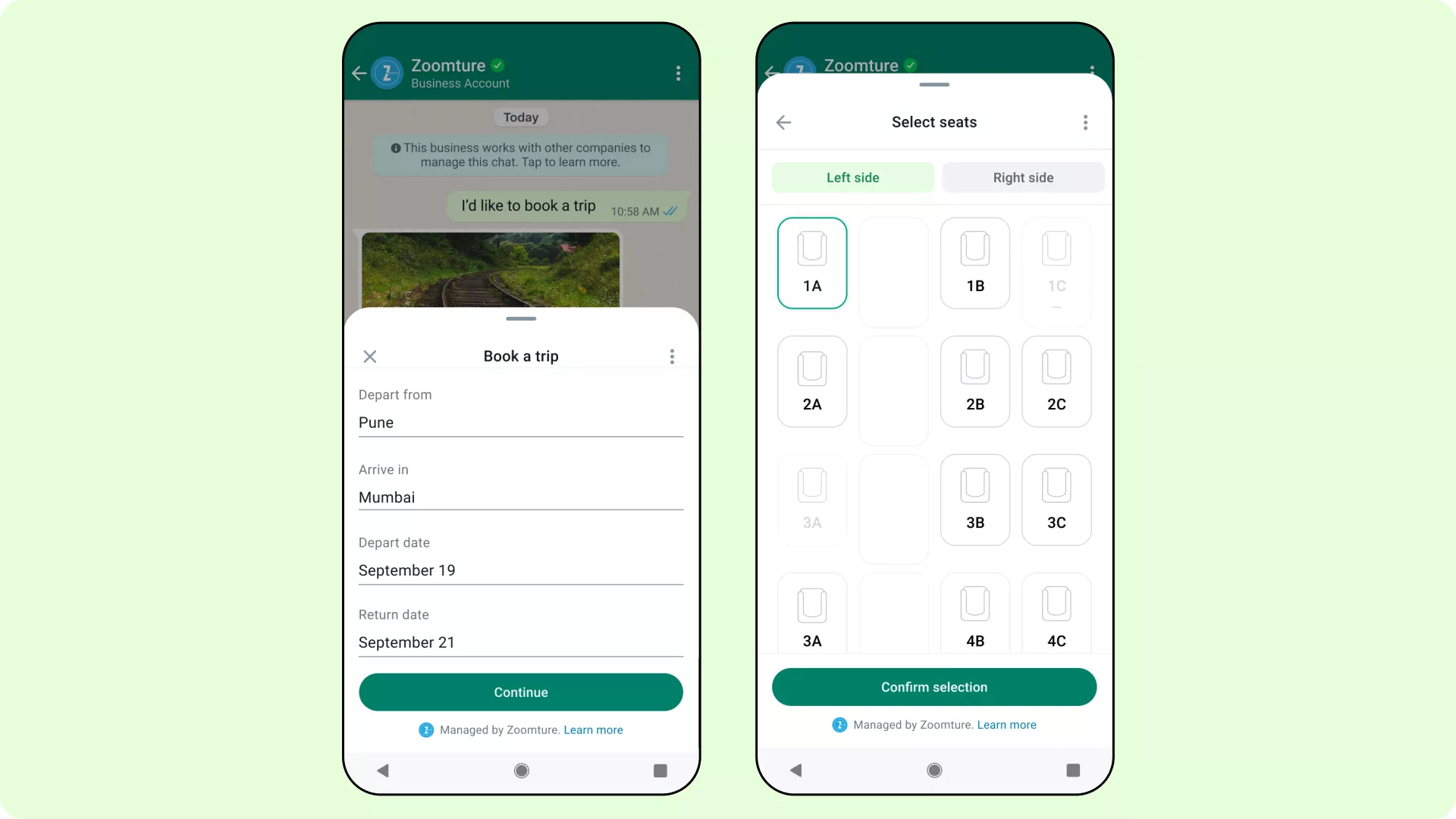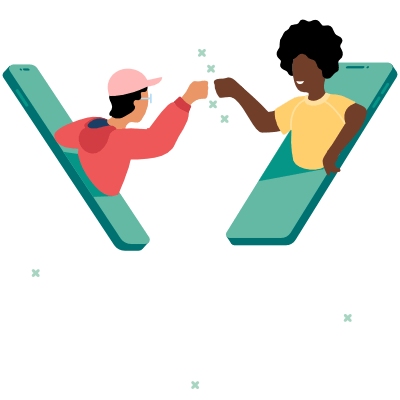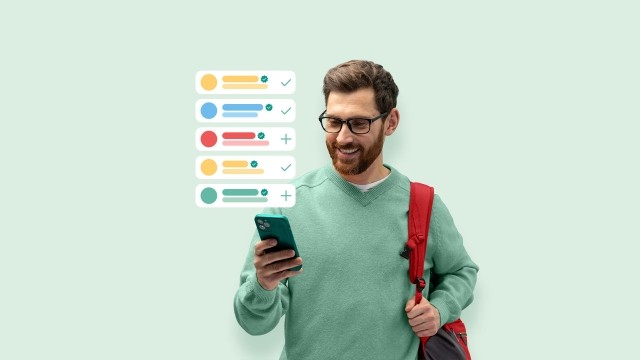What are WhatsApp Flows, how do they work, and what can you do with them? We explain the feature and show you five use cases that can be really helpful for your business.
WhatsApp Flows is the latest business feature WhatsApp is launching for WhatsApp Business Platform users. According to WhatsApp, it "allows businesses to provide services seamlessly while interacting with their customers."
In the following, we explain how the feature works, and show you some interesting use cases for WhatsApp Flows.
What are WhatsApp Flows?
With WhatsApp Flows, businesses will be able to provide rich menus and customizable forms that support different customer needs.
Basically, WhatsApp Flows work like an online form where the user gets to pick different choices from a drop down menu to be guided further along the customer journey or to input information first before either being able to buy something or being forwarded to a service agent.

The feature will be rolled out within the next weeks, but the tool could be a great asset for companies, from marketing to sales to customer service.
Six use cases for WhatsApp Flows
Being able to integrate customizable forms into your customer exchange gives businesses many interesting new opportunities on WhatsApp.
1. Configure a product to push sales
There are many scenarios in which a potential customer would want to see if a particular item would work for them before making a purchasing decision.
This could range from seeing if a sneaker is available in a certain size or color to checking if an item is available for delivery to even configuring a car online to see prices.
All these use cases could be supported by the WhatsApp Flows, and make it easier and faster for users to be led from a first interest in a product or service to a final purchase. Potentially, this can also boost sales, as conversion rates are typically higher if customers don't have to switch the platform.
And as WhatsApp is starting to roll out WhatsApp Payments in more countries now, this could even go as far as completing a payment online.
2. Choose marketing or newsletter content
If you're using WhatsApp for marketing or to send out newsletters, the form could also be helpful if you want to give your subscribers a choice to choose what type of content they want to receive.
For example, subscribers could choose if they want to get to new product updates or special deals, or both. This would make it easier to get the right content to the right users, and increase conversions.
Another option would be to allow your subscribers to choose how often they want to get an update from you.
In sum, the WhatsApp Flows can help you get the right content to the right users.
3. WhatsApp appointment scheduling
Every day, 200 million users reach out to a company on WhatsApp Business globally. So, many times, the first touch point you have with a customer is them reaching out to you with a question. "Are you open on Monday?" "Can I schedule an appointment two weeks in advance?" "When is your next available date for a service visit?"
Instead of just answering that, WhatsApp Flows would now add a new rich feature to that conversation, such as not only answering the question, but leading a user straight to booking an appointment directly through WhatsApp. This could be a useful feature for many different businesses, from scheduling test drives to booking a beauty treatment appointment to setting up an apartment visit.
4. Booking a service
Aside from scheduling an appointment, WhatsApp Flows will also allow users to book a service. This could be anything from reserving a table at a restaurant, choosing seats on a plane, or booking train or bus tickets.
India's Redbus bus booking app has been an early tester of the feature for booking bus tickets. With WhatsApp Flows, they have created a single window form flow for customers to fill in their details and book a bus ticket.
Some of their early results are: 17,000 users have used the service, with one third booking tickets from tier one, and two thirds from tier two and three. As Redbus is also offering multiple languages for their service, they noted that 35% of users chose Hindi as their chat language.
This could also be an additional benefit for companies that want to offer multilingual services.
5. Sign up for an event
Using WhatsApp to promote an event? Then WhatsApp Flows could be a great addition to help more people sign up faster. If you work with online events, you can then later use Flows or even the authentication messaging template to double-check user data or send them login information.
All of this could then happen exclusively on WhatsApp, which increases the chances of users signing up.
6. Log into an account
WhatsApp Flows could also make it easier for your customers to sign into their account. Lets say they want to check their utility bill or update their address information. Then they could just follow the flow to verify their identity, and then access their account.
How do you set up a flow on WhatsApp?
In order to be able to use WhatsApp Flows, companies need to be WhatsApp Business Platform users, as Flows will only be available through the API.
This means that, depending on how you access the API, there'll be different ways to use Flows. One would be to develop it yourself directly through the interface. The second option will probably be to build your flows through the Meta Cloud. If you access the API through a Meta Business Solution Provider, such as Sinch Engage, you'll be able to use it on the software solution as well, once it's available for the provider, of course.





